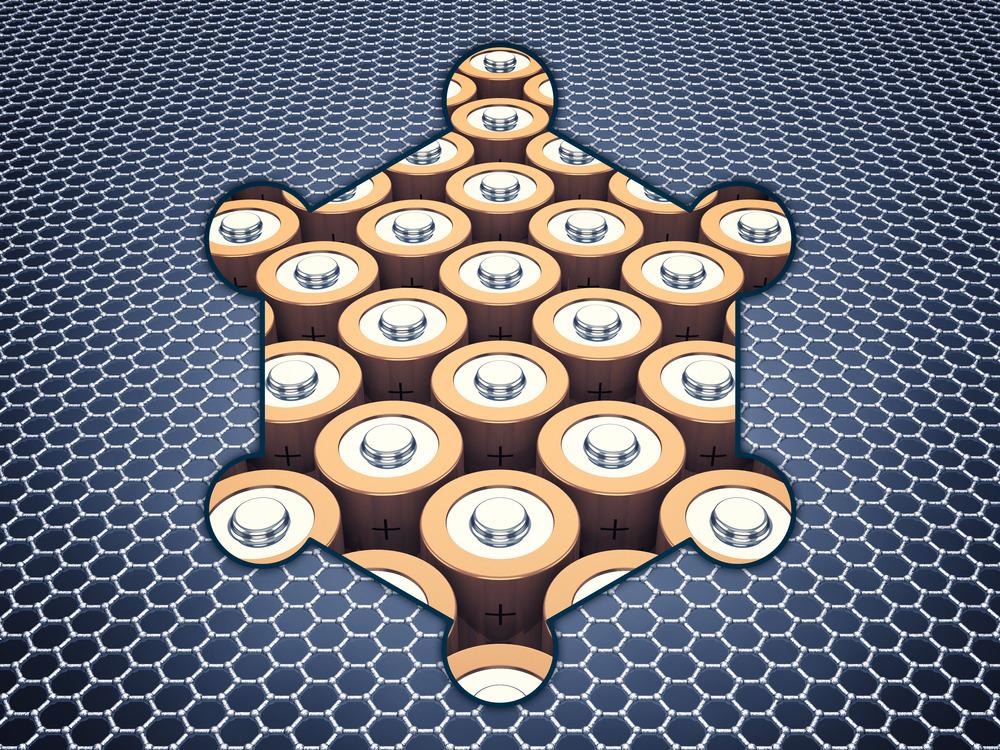The utility of supercapacitors lies within their capability of delivering and receiving high currents, making them effective for applications that require frequent energy storage and energy release. This, in turn, has led to supercapacitors being used more frequently. With the novel integration of graphene to produce graphene supercapacitors, the abilities of supercapacitors have the potential to increase to a higher level.

Image Credit: nobeastsofierce/Shutterstock.com
The potential of graphene is tremendous, and while it has advanced many other industries, this nanotechnology integration into the energy market can lead to a competitor against commercial batteries or lithium-ion. This article will provide an overview of graphene supercapacitors and the outlook of this novel innovation.
The Role of Supercapacitors
Capacitance refers to a component or circuit being able to collect and store energy as an electrical charge. Supercapacitors are energy-storing devices with high capacitance and consist of two plates of conducting materials such as a thin metal sandwiched between an insulator, usually made of ceramic, film, glass, or others.
Supercapacitors illustrate high power performance in contrast to batteries and possess other advantages such as short charge and discharge times and a lack of degradation.
However, the challenge that supercapacitors have lies in their energy density, an important property for an energy storing device, and found to be higher in batteries.
Innovations in hybrid energy storage systems have been actively explored in recent years, with attempts to combine supercapacitors and batteries to produce an energy-storing device high in both power and energy density.
The result of this can be seen with the development of electric vehicles which utilize this innovative energy storage system. The future of hybrid energy storage systems is only at its infancy with novel development of components that could lead to wearable electronics for self-charging devices.
The Introduction of Graphene
The pursual of high-performance supercapacitors has focussed on finding the optimal electrode amongst several different candidates such as graphene.
Graphene has become a novel material that has been used to advance various industries and fields, from electronics to concrete for use as a building material. Its high-performance properties have enabled it to be a desirable material for real-world applications due to its high surface area, high mechanical flexibility, and electrical properties.
Stoller described the first graphene supercapacitor in 2008, and over the years, the advancement of this innovation has only increased, with developments such as graphene-based electrodes.
The Next Generation Supercapacitor
While graphene started out within the nanotechnology field, it has grown to encompass many different industries with the aim of integration and advancement. The high potential of graphene within the field of energy storage for use as a next-generation supercapacitor electrode is due to having the highest known surface area, at 2630 m2 g−1, and a low density, at 2.28 g cm−3. This can enable this novel material to have a high packing density capacity, while the high surface area would benefit interaction with electrons.
Additionally, its property of electrical conductivity is advantageous for its role in advancing supercapacitors, as it can work to transfer electrons and ions through different device interfaces at a higher speed.
Its high mechanical strength and flexibility can also be beneficial for flexible and printable electronics while retaining its high capacitance.
Real-World Applications
With the invention of electric cars, the field of advanced electronics and advanced energy storage systems is only growing, and the addition of graphene for more advanced electronics will assist with meeting the demand of innovation. Research and development of graphene supercapacitors are evolving rapidly and can compete with commercial batteries in the future.
Technological developments such as graphene foam, laser reduction, and micro-supercapacitors have contributed and progressed graphene in the supercapacitor field. Creating highly porous and conductive 3D networks of graphene that can interact with electrons and have high capacitance is the beginning of the journey that will advance electronics and energy storage systems with the use of graphene.
Future challenges consist of increasing the energy density and further improving the power density of supercapacitors. This can be through the use of graphene due to its high performance and excellent properties. However, the widespread use of graphene-based supercapacitors may be challenged by large-scale fabrication of the material with high reliability and uniformity. Still, with further research and development in this field, the potential of graphene can soon become an advanced reality.
With the addition of graphene into energy storage systems, the advancement in this field can be immense, with lithium-ion batteries having a competitor to innovating electronics past conventional energy requirements and limitations such as limited charging abilities.
From self-charging wearable and portable electronic devices to creating more sustainable energy methods outside of utilizing lithium, graphene has great potential in revolutionizing the electronics and energy industry for a more innovative future.
Continue reading: Can this Novel Nanocomposite Improve Solar Energy Performance?
Further Reading and References
De La Fuente, J., (2021) Graphene Supercapacitors - What Are They?. [online] Graphenea. Available at: https://www.graphenea.com/
Velasco, A., Ryu, Y., Boscá, A., Ladrón-de-Guevara, A., Hunt, E., Zuo, J., Pedrós, J., Calle, F. and Martinez, J., (2021) Recent trends in graphene supercapacitors: from large area to microsupercapacitors. Sustainable Energy & Fuels, 5(5), pp.1235-1254. Available at: https://doi.org/10.1039/D0SE01849J
Disclaimer: The views expressed here are those of the author expressed in their private capacity and do not necessarily represent the views of AZoM.com Limited T/A AZoNetwork the owner and operator of this website. This disclaimer forms part of the Terms and conditions of use of this website.